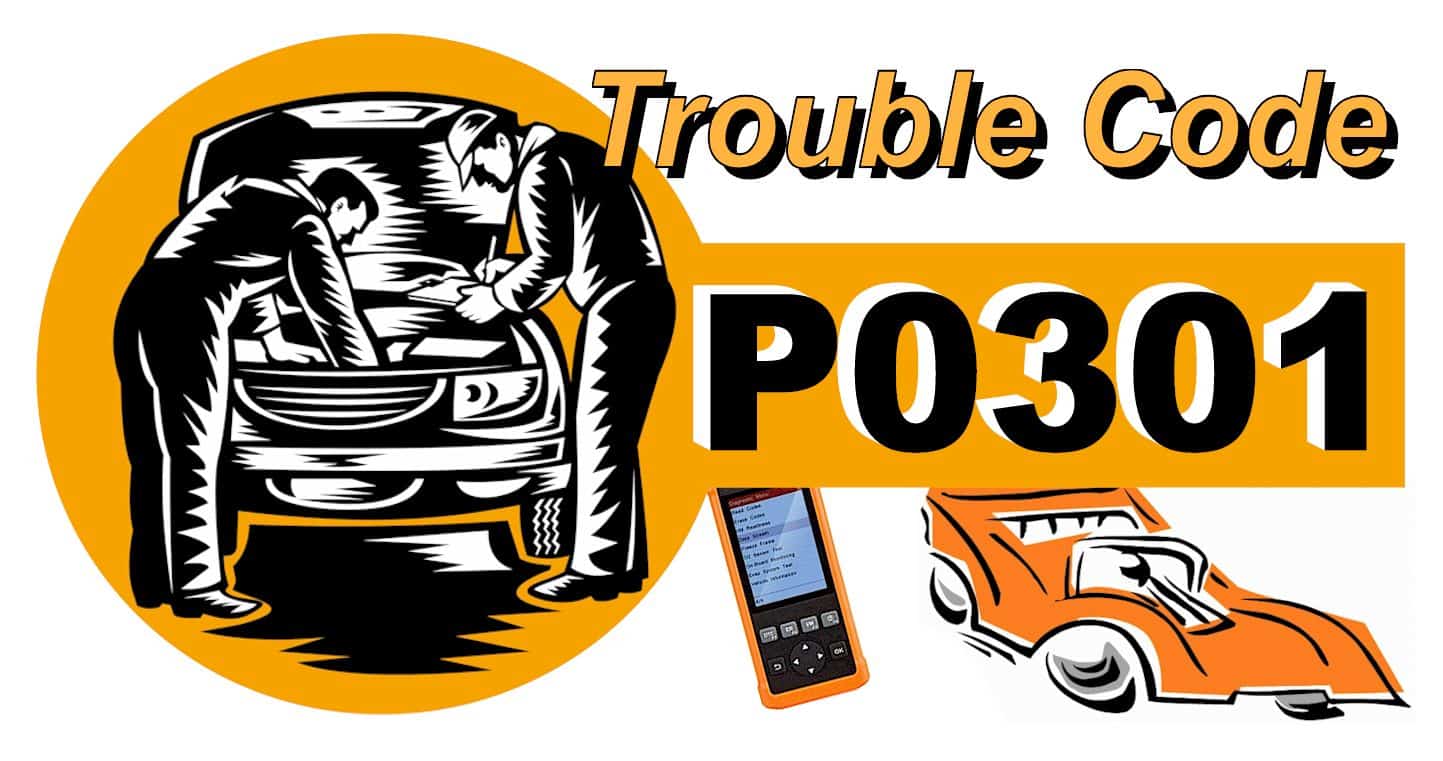Are you having difficulties with “check engine” lights? We’ve all been there.
If the code P0301 keeps showing up and you have no idea how what that means, you’re in the right place. Today, you’ll learn everything you need to know about the P0301 code: Cylinder 1 Misfire.
What Is the Code P0301?
This code is a general onboard diagnostic (OBD) code for vehicles. It indicates that the cylinder no. 1 in the engine is experiencing a misfire.
This means that the cylinder isn’t getting enough spark, which results in the misfiring condition.
OBD codes are generic codes that apply to all car models that are newer than 1996.
What is the Relationship Between the Cylinder and Code P0301?
Typically, most vehicles have 4 to 6 cylinders in the engine. Each one of these cylinders first has a spark plug at the end. These spark plugs fire in order to burn fuel.
Upon burning the fuel, the engine’s crankshaft is powered by the released energy from fuel combustion. However, the cylinders are the parts responsible for controlling the speed of rotation of the crankshaft. The rotation is expressed in rounds per minute (RPM)
If one of the cylinder misfires, it affects the RPM of the crankshaft. When the Powertrain control module (PCM) detects any decrease or increase in the RPM that’s higher than 2%, it’ll store the code P0301.
If the increase of decrease in the RPM is between 2 to 10 percent, the PCM will illuminate the “check engine” lights on the dashboard.
However, if the change in the crankshaft’s RPM is more than 10%, the “check engine” light will start blinking. The higher the percentage of change in the RPM, the more drastic the problem should be.
What Are the Causes of the P0301 Code?
There are many factors that cause the P0301 code. Here’s a list of the most common reasons:
- Worn or defective spark plugs in cylinder 1, which is the single most popular cause
- Defective coils or worn wires of the spark plug in cylinder 1
- Crankshaft failure
- Camshaft failure
In addition to the popular reasons, there are other uncommon reasons for the P0301 Code, including
- Defective crankshaft sensor
- Poor fuel injection
- Low-quality fuel
- Defective catalytic converter
- A leak in the vacuum line
- A leak in the gasket
- Poor mass airflow (MAF) sensor
What are the Symptoms That You Might Face Due to P0301 Code?
- Check engine” light is illuminating
- “Check engine” light is flashing
- The vehicle’s engine runs rough, or shaking
- The car lacks the usual power
- Noticeable increase in fuel consumption
- The vehicle stutters on acceleration
- The vehicle’s engine stalls while running
- The engine dies when it stops
- The exhaust has a gas smell due to inefficient burning of fuel
Other Troubleshooting Codes about Cylinder-Misfire
P0302 CODE: Cylinder 2 Misfire
P0303 CODE: Cylinder 3 Misfire
How Can You Fix the P0301 Code?
- Replace the defective spark plugs
- Replace the spark plug’s coils or wires if they’re defective
- Repairing the leaking gaskets
- Replace the crankshaft sensors
- Replace the camshaft sensors
- Replace oxygen sensor
- Replace faulty fuel injectors
- Replace mass airflow sensor
- Repair any leaks in the vacuum line
- Check for any related codes like P0300 and repair them
- Replace the catalytic converter
- Check the cylinder for internal damages. If you find any, you’ll need to replace the engine
In some rare events, the problem might be a faulty PCM. In that case, you’ll have to reprogram the PCM or replace it altogether.
How Do Mechanics Diagnose Code P0301?
They use a special tool (OBD-II scanner) to freeze the frame data stored in the PCM. If there were no symptoms of the problem, they reset the code and test drive the car. If the problem doesn’t return, you’re good to go.
However, if the problem comes back, this indicates a deeper problem. As a result, they continue their diagnosis as follows:
- They inspect the cylinder’s spark plug for any defects or damages
- They inspect the spark plug wiring for excessive wear of damage
- They check for any burns in the spark plugs or its wires
They replace the spark plugs, the wire, and the coils if needed and redo the test drive. If the code shows up they inspect other, causing agents such as:
- The fuel injectors and its wiring
- The crankshafts and the camshafts
- The oxygen sensors
- The mass airflow sensor
- The EGR valves
- The catalytic converter
After they find the cause for the error, they can repair it and check for any other codes.
Following that, they take the vehicle for a test drive to ensure that the problem doesn’t come back. Although it’s rare, if the P0301 shows up again, they’ll check the compression system of the cylinder.
Wrap Up
With that said, you now have a better understanding of the P0301 code. Unlike many other codes, this one is particularly alarming.
You should fix it as soon as you can, as driving a vehicle with misfires for a long time will cause some serious consequences to your engine. It might even lead to cylinder 1 damage. As a result, you might have to replace the whole engine.
James is a certified auto technician specializing in commercial vehicles. With 30 years of experience under his belt, James has encountered almost every type of automotive issue there is! Besides his day job at the repair shop, he is also an amateur race car driver.

